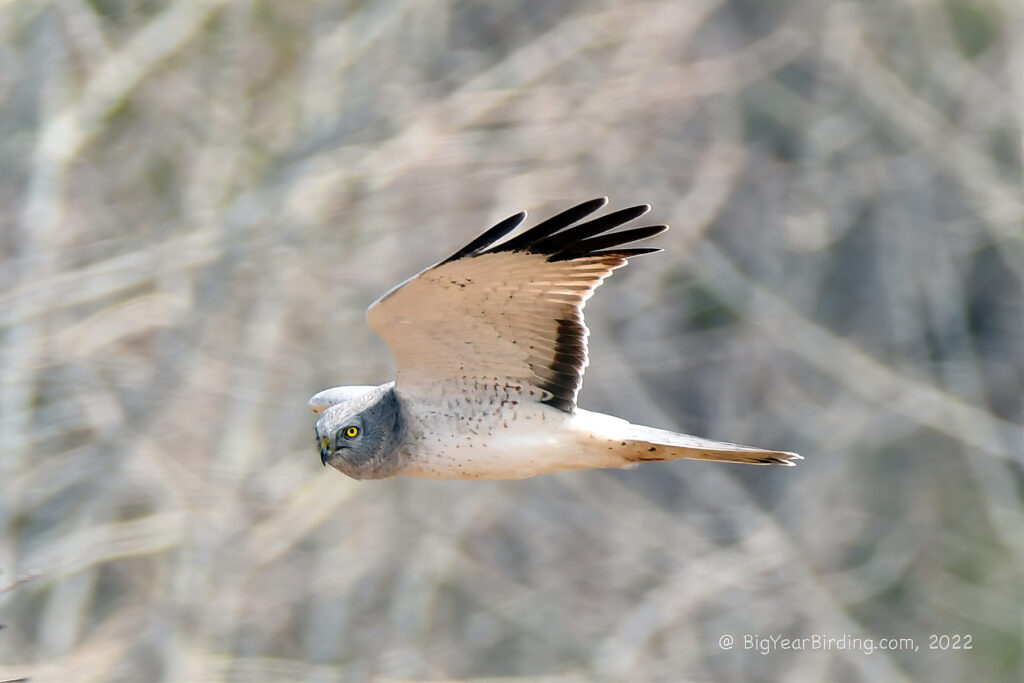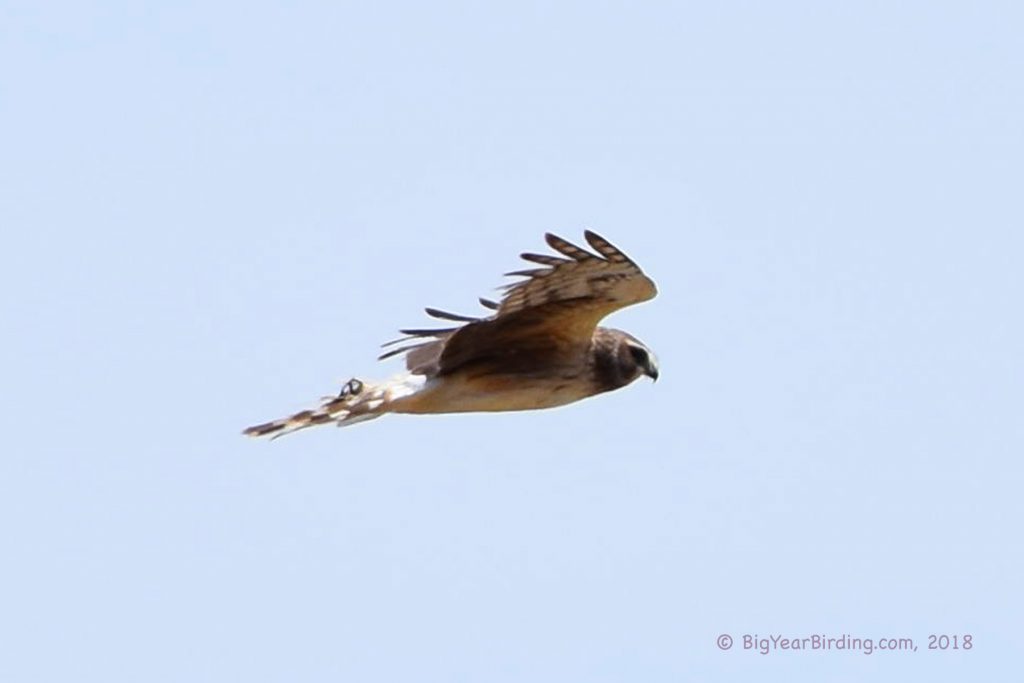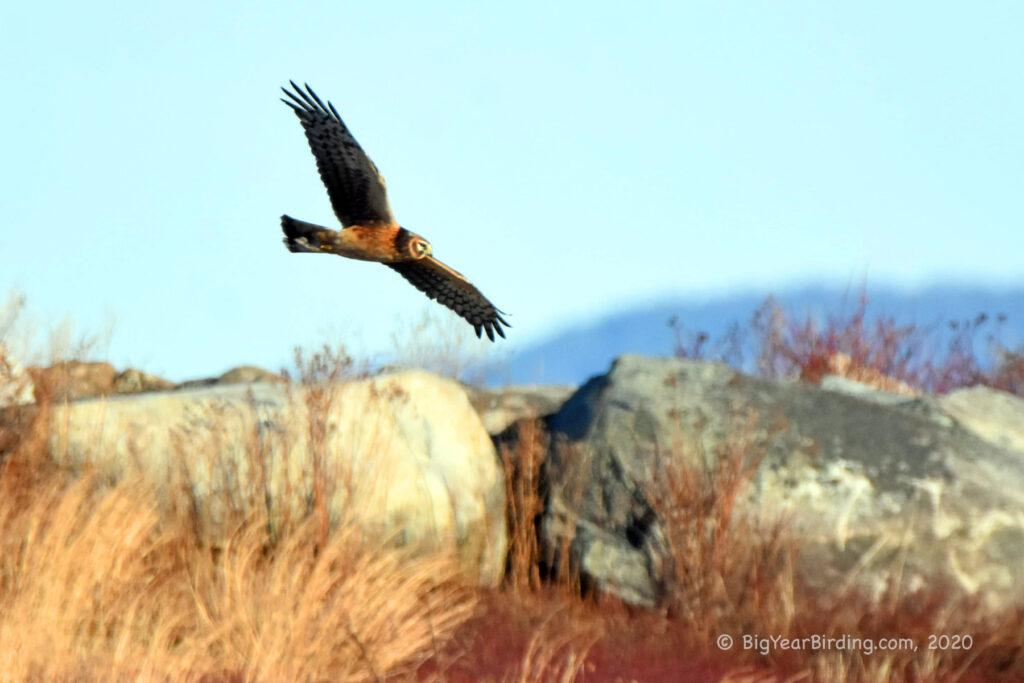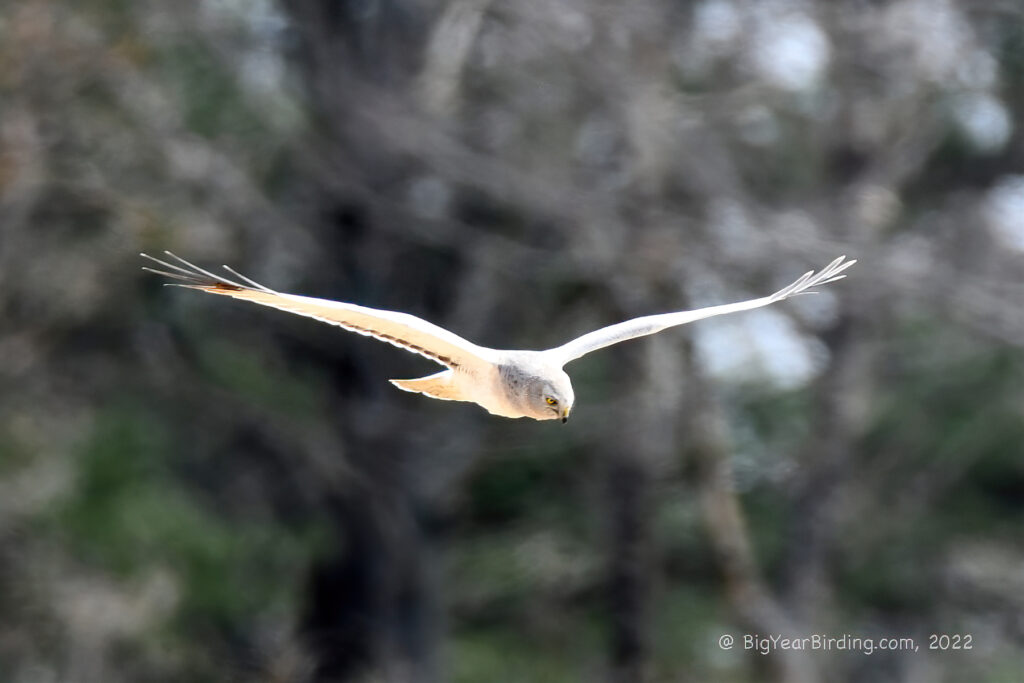
The Northern Harrier (Circus hudsonius) is a medium-sized raptor, measuring 16-20 inches in length with a wingspan of 40-48 inches. Females are larger than males, weighing between 22-35 ounces, while males weigh between 11-26 ounces. This species has a distinctive owl-like facial disc, which helps them to hear and locate prey in low-light conditions. They also have long wings and a long tail, which gives them a characteristic “v”-shaped silhouette while in flight.

Northern Harriers are easily recognized by their plumage, with males being grayish-blue on their upperparts, with white underparts, while females have brownish upperparts and streaked underparts. Both sexes have a distinctive white rump patch that is visible when they fly away. Immature birds are similar to females but have more streaking on their underparts.
Northern Harriers are migratory birds, breeding in the northern parts of North America and wintering in the southern parts of the continent, as well as in Central and South America. They breed in open habitats such as marshes, prairies, and fields, and during the non-breeding season, they can be found in a variety of habitats, including grasslands, wetlands, and agricultural fields.
Northern Harriers are known for their unique hunting behavior, which involves flying low over the ground, often in a circular pattern, looking for prey. They feed primarily on small mammals, such as voles and mice, but also take birds and insects. They have excellent hearing, which allows them to locate prey even in tall grass.

In addition to their distinctive plumage and hunting behavior, Northern Harriers are also known for their vocalizations. They have a variety of calls, including a high-pitched whistle, a harsh screech, and a series of chattering notes. These calls can be heard throughout their breeding range and are often used to locate individuals while they are in flight.

